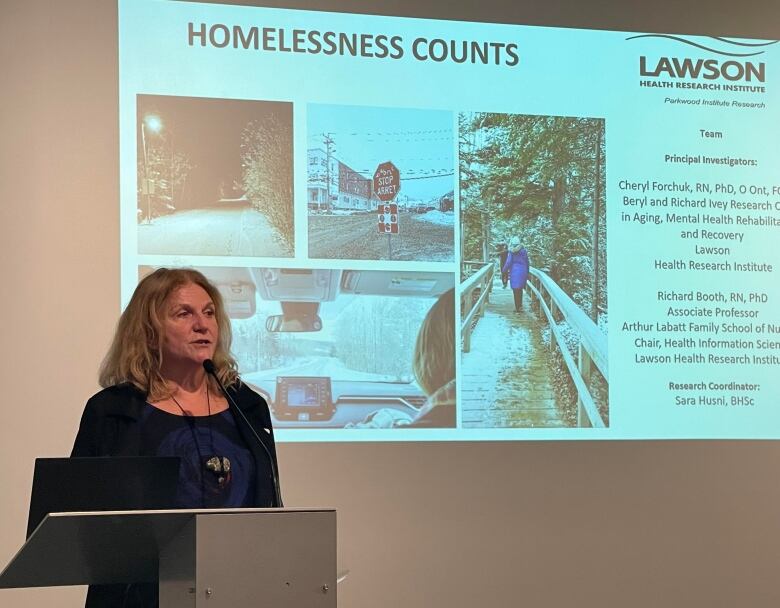What is the true number of Canada's homeless population? A new research project reveals how little we know
Available numbers likely only show a third of whats actually happening in Canada, says project lead

A year-long project led by the Lawson Health Research Institute has found that data gaps blur the true picture of homelessness in Canada, preventing rural and remote areas from getting the funding they need for services.
Findings from the Homelessness Counts research project were presented Tuesday at Goodwill Industries in London, Ont. The project collected data over the past 12 months from 28 communities across every province and territory in Canada experiencing growing homeless populations.
It examined how existing databases, such as provincial health data, could be better used to determine a more accurate sense of how many people are experiencing homelessness and why.
"It's a chicken-and-egg scenario in our rural and remote areas," said Cheryl Forchuk, Lawson's assistant scientific director. "They don't have homeless-serving sectors in many cases, so then they don't have data, but then they can't get services because they don't have data. It ends up being a bit of a vicious cycle."
There is a much higher percentage of Indigenous people experiencing homelessness in rural areas over urban, Forchuksaid, and the missing data means they have not been accounted for.
Current methods for counting those experiencing homelessness underestimate the reality, Forchuk said. The gathered numbers tend to be inaccurate or redundant, leave out those experiencing hidden homelessness, and include issues with consent such as stigma and mistrust.
Available numbers likely only show a third of what's actually happening in Canada, based on data the project has compiled so far from Ontario.
Emerging subgroups overlooked in current count
Researchers with Homelessness Counts used an algorithm looking at health data to get better numbers compared withtraditional methods that rely on people accessing the homeless sector to report themselves as homeless.
Those methods don't give full insight into the issue, Forchuksaid, because there is no one-size-fits-all approach to homelessness.
"You need different strategies for different subgroups," she said. "It's not only about having funding, but it's also about the right kind of funding because the kind of service youth want is not the same service, say, that a veteran wants."
Homelessness Counts found an increase within the spectrum of subgroups experiencing homelessness. Disadvantaged subpopulations in Canada range from youth, seniors, women, people who use substances, Indigenous people, 2SLGBTQ+, students, and adults or young people with developmental or cognitive disabilities.

The project had focus groups with just under 200 people providing services, and it interviewed 400 people who are currently homeless or have recently experienced homelessness. Of the 400, 16per cent were experiencing homelessness for the first timeand reported difficulties navigating the sector virtually due to the pandemic.
The Homelessness Counts forum in London was one of six taking place in Ontario presenting its preliminary findings. The research team will next return to some surveyed communities to get input on possible solutions.
"One positive thing that has come out from this is communities are starting to recognize how anybody can be vulnerable to homelessness," Forchuksaid. "I see in some communities grassroots organizations forming, and people seeing this population as their neighbours, because truly they are."












_(720p).jpg)


 OFFICIAL HD MUSIC VIDEO.jpg)
.jpg)



























































































